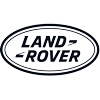 1998 Land Rover Freelander I (LN) Dimensions, Size & Specs
1998 Land Rover Freelander I (LN) Dimensions, Size & SpecsMeasurements of the 1998 Land Rover Freelander I, engineered for optimal performance and comfort
| Dimensions | |
|---|---|
| Length: | 4368-4445 mm172.0-175.0 in14.3-14.6 ft |
| Width: | 1809 mm71.2 in5.9 ft |
| Height: | 1708-1760 mm67.2-69.3 in5.6-5.8 ft |
| Trunk Capacity: | 354-370 liter12.5-13.1 cu ft |
| Trunk Capacity (Max): | 1315-1319 liter46.4-46.6 cu ft |
| Weight Specifications | |
| Curb Weight: | 1380-1645 kg3042-3627 lbs |
| Maximal permitted Weight: | 1960-2080 kg4321-4586 lbs |
| Tire Specifications | |
| Rims Size: |
|
| Tire Sizes: |
|
The Land Rover Freelander I (LN), produced from 1998 to 2006, is a compact SUV that marked Land Rover's entry into the smaller SUV market segment. This first-generation Freelander offers versatile dimensions that balance urban usability with off-road capability, making it a popular choice for drivers seeking a rugged yet practical vehicle. The Freelander I measures between 4368 mm to 4445 mm (172.0 to 175.0 inches) in length, providing sufficient interior space without being overly large. Its width ranges from 1805 mm to 1809 mm (71.1 to 71.2 inches), while the height varies between 1708 mm and 1760 mm (67.2 to 69.3 inches), giving the vehicle a commanding stance and good ground clearance. Curb weight for this SUV spans from 1380 kg to 1645 kg (3042 to 3626 lbs), depending on the configuration, with a maximum weight capacity ranging from 1960 kg to 2080 kg (4321 to 4586 lbs), reflecting its capability to carry passengers and cargo reliably. The luggage capacity ranges from 354 liters (12.5 cubic feet) with all seats in place, expanding significantly to about 1315 to 1319 liters (46.4 to 46.5 cubic feet) when the rear seats are folded, offering ample space for larger loads or gear. Equipped with 15-inch rims, the Freelander I uses tire sizes such as 195/80 R15 S, 215/75 R15, and 195/80 R15, contributing to its balanced road grip and off-road traction. Overall, the Land Rover Freelander I stands out as a compact yet capable SUV that offers practical dimensions for everyday driving and outdoor adventure, blending Land Rover's legendary ruggedness with efficient space utilization.
Discover the standout features that make the 1998 Land Rover Freelander I a leader in its class
Have a question? Please check our knowledgebase first.
The Land Rover Freelander I (LN), produced between 1998 and 2006, has an overall length ranging from 4368 mm to 4445 mm (171.9 to 175.0 inches). This variation in length typically accounts for different trims or minor model updates throughout its production run. Its relatively compact length positions it well within the compact SUV category, providing balanced proportions suited for both urban driving and light off-road use.
The width of the Land Rover Freelander I (LN) ranges between 1805 mm and 1809 mm (approximately 71.1 to 71.2 inches). This width offers a stable stance that contributes positively to handling and road stability, especially given the vehicle's SUV design. The width strikes a balance, providing enough cabin room for passengers while maintaining maneuverability in city environments and narrow off-road trails.
The height of the Freelander I (LN) varies from 1708 mm to 1760 mm (67.2 to 69.3 inches). This elevated height enhances driver visibility over traffic and obstacles—a key trait for SUVs. However, the increased height also raises the center of gravity, which might influence handling dynamics, especially on sharp turns. Nevertheless, the vehicle is designed with suspension tuning to maintain good stability and off-road capability.
The curb weight of the Land Rover Freelander I ranges from 1380 kg to 1645 kg (3043 to 3627 lbs). This weight variation depends on factors like engine type, drivetrain configuration, and equipment levels. Being moderately weighted helps the Freelander maintain decent fuel efficiency for an SUV while also contributing to robust road presence, off-road capability, and reasonable acceleration and braking performance.
The maximum weight the Freelander I (LN) can handle ranges between 1960 kg and 2080 kg (4321 to 4586 lbs). This figure includes the vehicle's own curb weight plus passengers, cargo, and any additional loads. Knowing the maximum gross vehicle weight is crucial for safety and performance, as it ensures the vehicle isn’t overloaded, which could otherwise impair handling, braking, and drivetrain reliability.
The Land Rover Freelander I offers a luggage capacity of between 354 and 370 liters (about 12.5 to 13.1 cubic feet) with all rear seats in use, suitable for daily needs and small family trips. Folding down the rear seats notably expands the cargo space to approximately 1315 to 1319 liters (46.4 to 46.5 cubic feet), providing ample room for larger luggage, sports equipment, or camping gear, making it practical for longer journeys and outdoor adventures.
The Freelander I, with a width of around 1805 to 1809 mm (71.1 to 71.2 inches) and height up to 1760 mm (69.3 inches), fits comfortably into most standard residential garages, which are typically about 2.4 to 2.7 meters (7.9 to 8.9 feet) wide and 2 to 2.4 meters (6.5 to 7.9 feet) high. Its length of up to 4445 mm (175.0 inches) is also well within standard garage depths (usually around 5 to 6 meters), so parking and storing the Freelander I indoors should pose no issues.
As the first-generation Freelander launched in 1998, it did not have a direct Land Rover predecessor in the compact SUV segment, filling a new niche for the brand. Compared to SUVs from other manufacturers in the late '90s, such as the Toyota RAV4 or Jeep Cherokee, the Freelander I was competitive in size—slightly longer and wider than some, with a taller profile typical of Land Rover's off-road focus. Its dimensions offered a good balance of urban usability and off-road capability, helping establish Land Rover's footprint in the compact SUV market.
Compared with contemporaries like the Honda CR-V, Toyota RAV4, and Jeep Cherokee from the late 1990s to early 2000s, the Freelander I is similar in width and height but is often a bit longer, offering a slightly more spacious interior and cargo area. It stands out with its true Land Rover 4WD system, which enhances its off-road capabilities unlike many competitors that were more road-biased. Its luggage capacity and rugged build combine practicality and durability, appealing to those looking for a compact SUV with genuine off-road performance.
The Freelander I is equipped with 15-inch rims and tire sizes of 195/80 R15 S, 215/75 R15, or 195/80 R15 depending on the variant. These tire dimensions provide a balance between road comfort, off-road grip, and tire longevity. The relatively tall sidewalls (aspect ratio 75-80) contribute to absorbing road imperfections and improving off-road performance by offering better cushioning and flexibility on uneven surfaces, which complements the vehicle's intended mixed-use nature.
Discover similar sized cars.
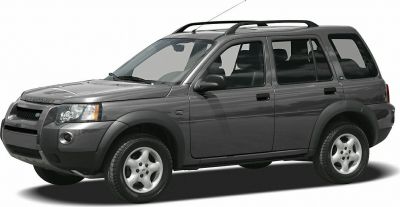
| Production: | 1998-2006 |
|---|---|
| Model Year: | 1998 |
| Length: | 4368-4433 mm172.0-174.5 in |
| Width: | 1809 mm71.2 in |
| Height: | 1708-1760 mm67.2-69.3 in |
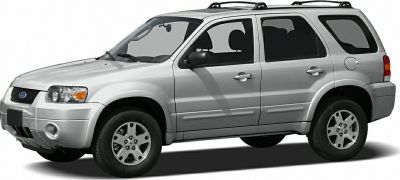
| Production: | 2000-2007 |
|---|---|
| Model Year: | 2001 |
| Length: | 4394-4442 mm173.0-174.9 in |
| Width: | 1781 mm70.1 in |
| Height: | 1702-1775 mm67.0-69.9 in |
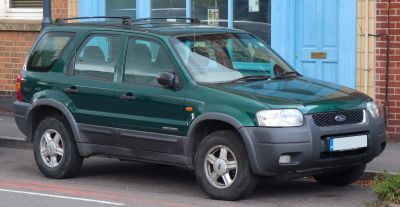
| Production: | 2000-2007 |
|---|---|
| Model Year: | 2000 |
| Length: | 4394-4441 mm173.0-174.8 in |
| Width: | 1781-1825 mm70.1-71.9 in |
| Height: | 1722-1762 mm67.8-69.4 in |
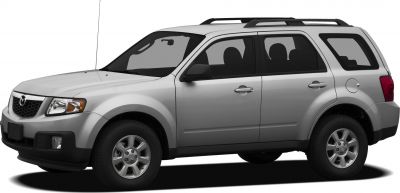
| Production: | 2000-2011 |
|---|---|
| Model Year: | 2001 |
| Length: | 4395 mm173.0 in |
| Width: | 1800-1825 mm70.9-71.9 in |
| Height: | 1710-1765 mm67.3-69.5 in |
